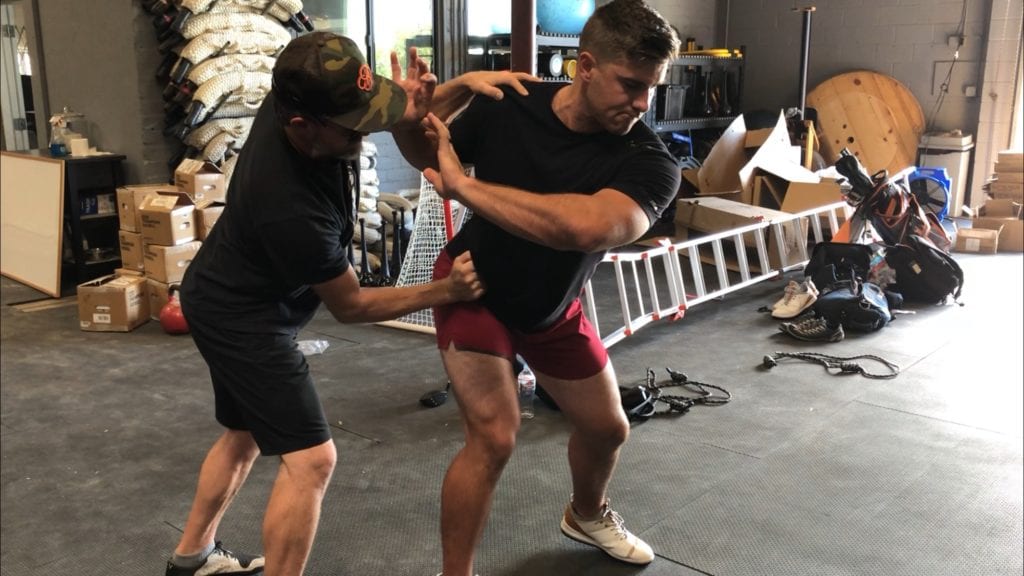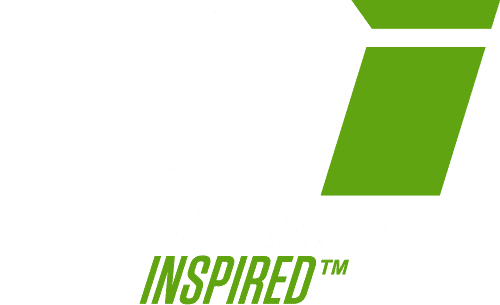What is Recovery?

Recovery is one of the biggest buzzwords in the industry today. But, dare we ask, what is recovery and what actually helps us to recover? What is the actual purpose of all of these “recovery” devices?
I believe, as with nearly every fad at certain times in the fitness industry, that “recovery” and the idea of enhancing recovery have been vastly overstated. First of all, let’s get one thing straight: There is no device that enhances or speeds up the rate of recovery. Our goal is to “normalize” recovery. This statement may be shocking to many of you because of the billions of dollars spent to convince you otherwise, but the body recovers at the rate it recovers, and no device enhances that experience.
But, pay attention to this next point. There are a number of factors that inhibit normal recovery. Chemical imbalances, lack of sleep, poor nutrition, and a number of other factors can slow down your body’s normal rate of recovery. When inhibiting normal recovery, the possibilities and negative factors are endless. This point may seem “cute” to some, but it is important to note that, while we don’t enhance our ability to recover, we can act to normalize it.
So, in other words, there is no magic healing machine that enhances your body’s ability to recover. There are, however, many devices which aid in normalizing the recovery process, which I will get into later. First, let’s look at a few key points in the recovery process courtesy of my friend, Gary Reinl, creator of the Marc Pro (one of my favorite recovery tools).
Real recovery centers around these four points:
- Muscle receives nourishment from oxygenated blood
- Waste and deoxygenated blood are removed from the muscle
- Myokines, which enable the tissue regeneration process, are produced, released, and distributed
Repaired tissue is reorganized.
So, what exactly does this mean? I’ll explain it this way. My father is an old school bodybuilder who does not believe in resting injuries. His theory is that you enhance the healing process through increased light activity. If he injures his lower back, he is working his lower back in the gym the next day. His theory has always been that you must “attack” the injured muscles. As it turns out, he was and is exactly right. Inactivity aids injury; activity enhances recovery.
As a rudimentary explanation of the recovery process, when a muscle is strained through normal activity or through a more severe injury, fibers are actually torn in the muscle. In part, this is what causes muscle soreness. In order to fix the injured area, the body sends “reinforcements” through oxygenated blood to aid in the recovery process. Simply stated, as our blood pumps to the injured area, oxygenated blood from the heart and lungs brings the “good stuff” in and gets the “bad stuff” out. In this “good stuff,” myokines go to work in tissue regeneration, and the repaired tissue is reorganized in the muscle.
When thinking about how to normalize our recovery process, these points must be kept in mind. The muscle must have blood brought to the area so that the “good stuff” can be brought in, “bad stuff” can be removed, and myokines can go to work. My father was absolutely correct—activity is key to the healing process, because healing is found within the oxygenated blood. Therefore, any form of “recovery” that does not get blood moving through the area falls short. Below are several recovery methods currently in use that, in my opinion, fall short.
1) Ice
I have always doubted the healing effects of placing ice directly on an injured area. As a minor league pitcher, I never liked having my arm iced after a game. I felt that I always ended up worse the next day. The idea behind icing is to inhibit inflammation. However, we actually want inflammation in the healing process. Inflammation occurs naturally for a reason in an injured area, as it prompts a hormonal and chemical response in the body to get the healing process started. As previously stated, we know that healing occurs through circulation. When we essentially freeze an injured muscle, blood flow is inhibited, and we slow down the rate at which waste is removed and oxygenated blood arrives.
While I believe cold tubs and contrast baths work well to increase blood flow and bring about a great hormonal response, I feel that spot icing after muscle trauma slows the rate of recovery. A better approach, and one I favored while pitching, was to go through a series of light exercises intended to bring blood to the area, which reflects our principles of recovery.
2) Foam Rolling (Alone)
I use foam rolling and massage techniques but believe there is an apppropriate time, place, and method. Foam rolling has become an almost religious experience in many circles, and it certainly has its benefits. I will humbly suggest, however, that if you need 45 minutes of foam rolling before exercise in order to get through the workout, you may want to reconsider the nature of your program!
These processes certainly work to reorganize tissue and eliminate hot spots but, when done alone, do not pump blood into the muscle—the fundamental point of normalizing recovery. These methods, when done incorrectly and in excess, can actually inhibit recovery. If we cause trauma to the muscle though intense massage on a “recovery day,” then do not act to supply that area with new blood, we may be doing more harm than good. A better approach would be to use massage and trigger point techniques when needed but to then actively attempt to remove the waste and “bad stuff” from the muscle through activity.
Again, blood flow is necessary to normalize the healing process. Let’s look at several tools and methods I believe assist in normalizing recovery.
- Nutrition
This should be a giant “no-brainer” for everyone. You can’t outwork a bad diet, and poor nutrition can greatly affect recovery. For all the talk we have had around blood flow and nutrients to the muscle, if proper nutrients are lacking because of a poor diet, they won’t be available for your body to use. We know through research that Whey Protein, BCAAs, Creatine Monohydrate, and other supplements have been proven to aid in recovery and muscle growth. We also know that a diet high in sugar and processed carbohydrates promotes excess inflammation and a host of other negative health issues. This is why it is important, as an athlete, to have a diet low in carbohydrates (especially grains) and rich in animal fats and proteins supplemented with Whey Protein, BCAAs, Creatine Monohydrate, and other natural nutritional supplements. Many of you will disagree with this assessment and that’s okay. But, this is where the research I have seen currently takes me.
2) Exercise
If you go to a rehabilitation clinic after surgery, they will put you through a series of regimented exercises to get blood flowing through the injured area. Doctors and therapists have known for years what we have discussed—increased blood flow and circulation to an area brings healing. If you are sore the day after a workout or event, don’t sit on the couch the entire day. Develop a routine where you go through a series of movements that gets your blood flowing and your heart rate slightly elevated.
3) Inferred Sauna/Cold Tub
An inferred sauna is an excellent tool that elevates your core body temperature, causing you to sweat out toxins and increasing circulation throughout your body. There has been a plethora of research done on the benefits of the inferred sauna, including hormonal benefits, better sleep, etc. We won’t get into all of it here, but I use a sauna several times a week and highly recommend it.
Likewise, the cold tub works on the other end of the spectrum. Exposure to extreme cold can trigger a great hormonal response by the body as it works to heat the body back up over the next several hours. A cold shower or ice bath essentially “shocks” the body into thinking it is freezing, and it goes into overdrive trying to normalize body temperature. This process is fantastic for increased circulation and hormonal function.
There are a few tools that I use in my recovery process, and I have described them below.
1) MarcPro (www.marcpro.com)
The MarcPro is a device I have used for several months now that has greatly aided in my recovery. MarcPro uses electrical stimulation to contract and relax the muscle, thus moving blood into the muscle and aiding in the healing process. It is the only device I know of that hits all of the points necessary for recovery and is the product I use most.
2) Chilipad (www.chilitechnology.com)
Sleep is a fairly obvious element we can point to when it comes to recovery. If you are not sleeping well, your recovery will be greatly hindered. The Chlipad works in actively cooling (or heating) the surface area of your mattress throughout the night, helping you to sleep easier and wake refreshed.
3) Vibrating Foam Roller
There are a number of different products on the market from this category. Some research has indicated that the vibration in the roller can help relax the muscles and assist in getting to the trigger point a bit easier. As noted previously, I believe foam rollers are a great tool for recovery when used in association with movement and exercise.
As you can see, there are a ton of factors that go into the recovery process. There is no magic bullet, despite what many advertising campaigns might tell you. As with most health issues, a holistic, well-balanced approach will yield the greatest results. Again, our goal is to get rid of things that hinder the recovery process, not to somehow mythically enhance recovery. The key to normalizing recovery is creating an ideal environment for our bodies to get the good stuff in and the bad stuff out.
As you encounter various products in the world of “recovery,” ask yourself what they actually do. When you begin to form a system that enhances blood flow to the muscle, removes waste from the muscle, regenerates tissue with myokines, and reorganizes the repaired tissue, you are on the road to recovery.


